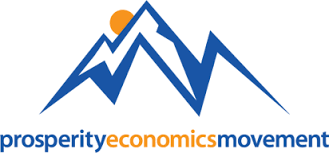“More than 25% of Americans are dipping into 401(k) retirement accounts to pay for bills.”
~The Los Angeles Times, March 7, 2013
More people are raiding their 401(k)s than ever before, but not for retirement. According to CNBC’s report of a HelloWallet study, one in four Americans are borrowing from retirement accounts to pay bills, such as their mortgage, college tuition, even credit card payments.
More than $70 billion is being withdrawn annually from retirement accounts. And the troubling trend seems to be on the upswing.
Citing a report from Wells Fargo, Bloomberg Newsnoted in April of 2013, “The number of people taking loans from their 401(k) retirement accounts increased 28% in the fourth quarter from a year earlier as older workers tapped their savings.” According to the report, people in their 50s were the most likely to borrow against their retirement savings.
While noted as an alarming problem by financial experts, the rampant borrowing from retirement accounts is actually a symptom of two larger problems. The first is plain enough:American’s haven’t saved enough.
The second problem may be less obvious, but no less critical to understand and correct:Many people lack financial flexibility – including (and perhaps even especially) those who HAVE saved diligently.
In other words, we’ve saved “too much” – in the wrong places. And we’ve lost our financial stability by losing control of our cash.
“Financial Flexibility” is a term thrown around in academic papers in economics and financial analyses of corporations. Defined as “a firm’s ability to take advantage of unforeseen opportunities or their ability to deal w/ unexpected events depending on the firm’s financial policies and financial structure,” the significance of financial flexibility is described this way in a wiki answers forum:
“For example, a firm w/ high debt obligations and weak solvency (ability to pay obligations as they come due) and liquidity (ability to turn assets into cash quickly) is not very financially flexible.”
In the corporate world, financial flexibility affects a company’s valuation because it affects its stability, its long-term viability, and its ability to respond effectively to change.
In your personal economy, financial flexibility has exactly the same benefits. Similarly, a lack of financial flexibility brings vulnerabilities.
Too Many Accounts, Too Little Money
The problem is this: when people do save diligently, they tend to save in many different specifically-niched or “designated” accounts. A function of the financial marketplace, products, plans and accounts arise for every specific financial need. Congress provides a new template, financial institutions develop new products, and consumers/investors divvy up their income into smaller and smaller pieces.
Pretty soon, our “financial plan” looks like this:
- Got your 6-9 months of emergency expenses set aside in a savings account? Good.
- Now max out your 401(k) and IRA to save for retirement.
- Do you want to purchase a home? Save diligently for that down payment!
- Current (or anticipated) medical expenses? Save in your HSA and your FSA.
- Future college costs for your children? Start saving in a 529 plan or Coverdell account before your children get to kindergarten.
- Prepared for an income-losing injury or disability? Don’t forget disability insurance payments!
- Don’t want to pay on your mortgage forever? Better make additional mortgage payments.
- Time for a vacation? Either save for it beforehand, or you’ll be saving to pay off your credit cards afterwards!
- Of course, don’t forget your permanent life insurance as an essential part of your financial strategy.
- Concerned about the rising costs of long-term care? Start paying into long-term care insurance coverage by your 40’s.
- Etc. etc. etc….
Taken by themselves, many of these products and strategies make perfect sense. But a financial approach that simply adds another account each time a new issue arises usually doesn’t work well. Dividing up money into various accounts means that the flexibility needed to face life’s challenges and opportunities may be simply lost.
In trying to find the perfect solution to each financial challenge, it’s possible to undermine the effectiveness of your whole financial program. Here’s why:
Things change. Your income may be interrupted, your house might suddenly require a new sewer system, your daughter could decide not to attend college, or a big down payment might be needed to seize an opportunity. If (and when) change comes, accounts that perfectly addressed an old financial issue may not be well-suited to handle today’s challenges. If making changes to accommodate new financial realities results in surrender charges and/or additional penalty taxes, reconfiguring those “perfect” plans can be a costly process.
There’s not enough money to go around. When people have many issue-specific accounts, some programs may never be fully funded. Under-funding may lead to under-performance, financial sabotage, or outright failure.
As an example, when individuals seeking a permanent life insurance benefit choose a minimum-premium universal life policy, they run the risk that the coverage will expire before they do. The result: a lot of premiums paid, and no benefits.
Likewise, there might be just enough money in that education account to disqualify a student from receiving financial aid, but not enough to pay for a degree.
It costs more in the long run. The shortcomings of the issue-specific approach are evident in the way employees focus their accumulation efforts on their 401(k)s, then end up borrowing from the accounts. Using a 401(k) before retirement is costly from a tax standpoint, limited in regard to amounts that can be loaned, and can result in another debt that must be added to the monthly budget.
In short, it’s financially inefficient. Retirement accounts work best when they aren’t accesseduntil retirement. But when career changes, health problems, or financial emergencies crop up, those who maximally fund their 401(k)s find themselves tapping the account and paying the penalties.
Why not “under-commit” one’s 401(k) contributions, and instead establish a “multi-purpose” accumulation account that wouldn’t be so costly or restrictive to access? This flexible approach recognizes the realities of change and limited resources, and gives you options to better respond to whatever comes up.
Sometimes, it takes money to make money. Many former employees have discovered that starting a business is the best way to guarantee steady, profitable work for themselves. But what happens when funds needed to start a business have been socked away in retirement accounts, or given as extra payments to a mortgage company? In the former case, you’ll be paying taxes and penalties to free up funds, and in the latter, selling your house is the only way to recover those additional payments.
While it may seem counter-intuitive at first, give thoughtful consideration to putting LESS money towards specific-purpose accounts in order to build up substantial “multi-purpose” savings.
How to Fund a Flexible, Multi-Purpose Account
“Wait a minute…” you might be thinking… “Isn’t this multi-purpose account just one more thing to save for!?” Not necessarily! You can actually re-allocate some of the money saved elsewhere in order to increase the flexibility and USE of your assets. Some places to find money for a multi-purpose account might be:
- Extra (or extra large) mortgage payments. Instead of opting to pay off your home loan with a 15-year mortgage or additional payments, it might be to your benefit to choose a 30-year term and accumulate the difference.
- Retirement account contributions above the employer match. Instead of making the maximum 401(k) deposit from each paycheck, consider limiting contributions to a qualified retirement account and saving elsewhere to diversify your assets as well as ensure access to your assets.
- “Education expenses only” accounts. It might be prudent to hold your accumulation outside of these for-education-only accounts until your children are sure about their higher education plans.
- FSA accounts funded over and above basic healthcare expenses. As FSAs are “use it or lose it” accounts, over-saving simply leads to overspending at the end of the year.
- Disability and long-term care. It may make sense to utilize “living benefits” from a substantial permanent life insurance policy that can function as a multi-purpose flexible accumulation account, rather than risk underfunding life insurance, disability, and long-term care.
- Insurance premiums. Most consumers come out ahead by reducing premiums, raising deductibles, and saving the difference.
It is impossible to predict exactly WHAT you’ll need or want to use your savings for. The solution is to save money in accounts that can be used for unlimited purposes.
What’s the best way to save money? There are many possibilities. We often recommend cash value accounts that are:
- tax-advantaged
- liquid
- easily collateralized
- safe from market fluctuations
- not controlled by employer or government rules, and
- earn reliable rates of return.
In a previous article, we described these multi-purpose accounts as “opportunity funds” and gave further details about how they can be used to store cash and build wealth.
The Best Financial Plan is a Flexible one. We urge our clients to re-think how they save money, and to be ready for anything, whether “anything” turns out to be a new roof, a new business, a medical emergency or a college degree.
Are you saving too much in the wrong places? We can help you diversify your savings and take back control of your money.
©Prosperity Economics Movement




